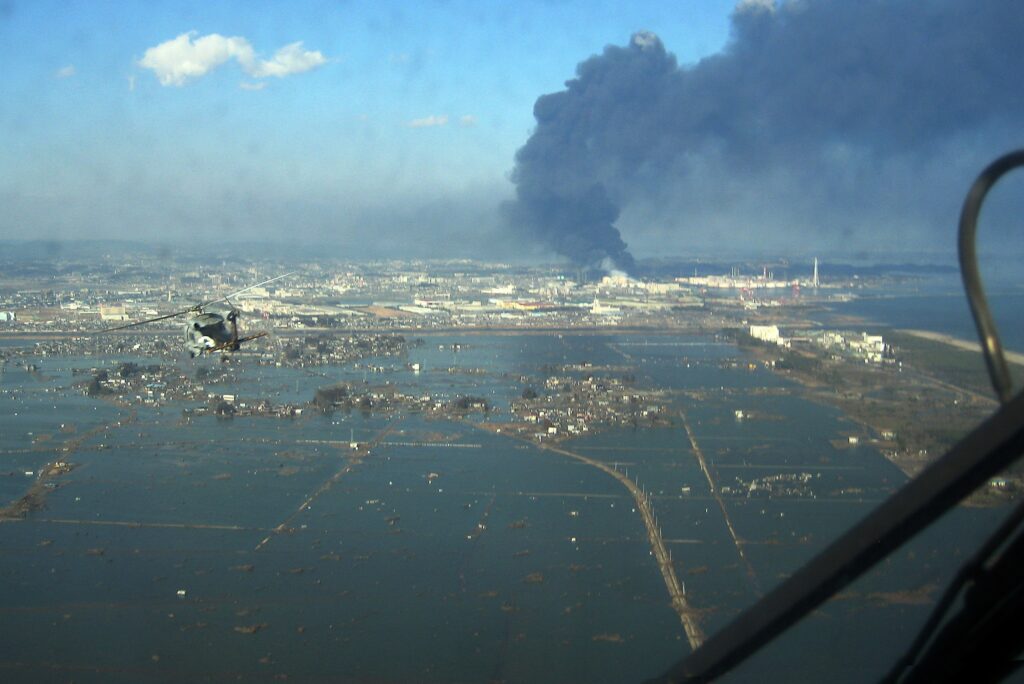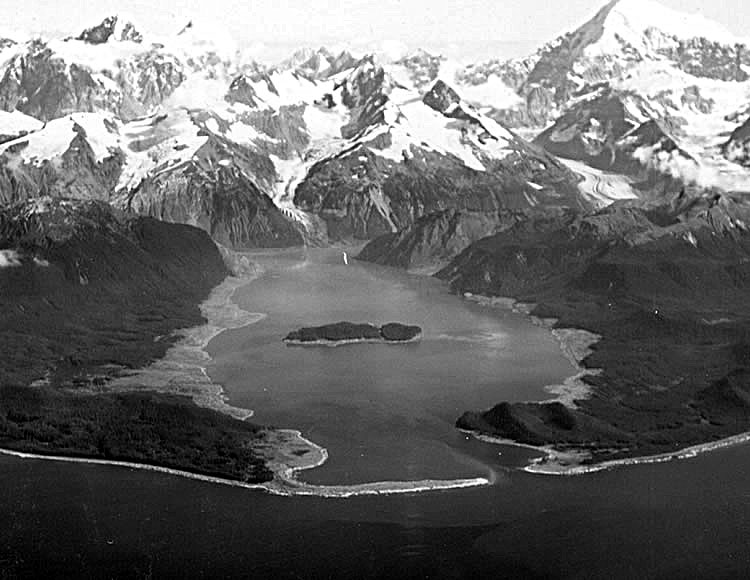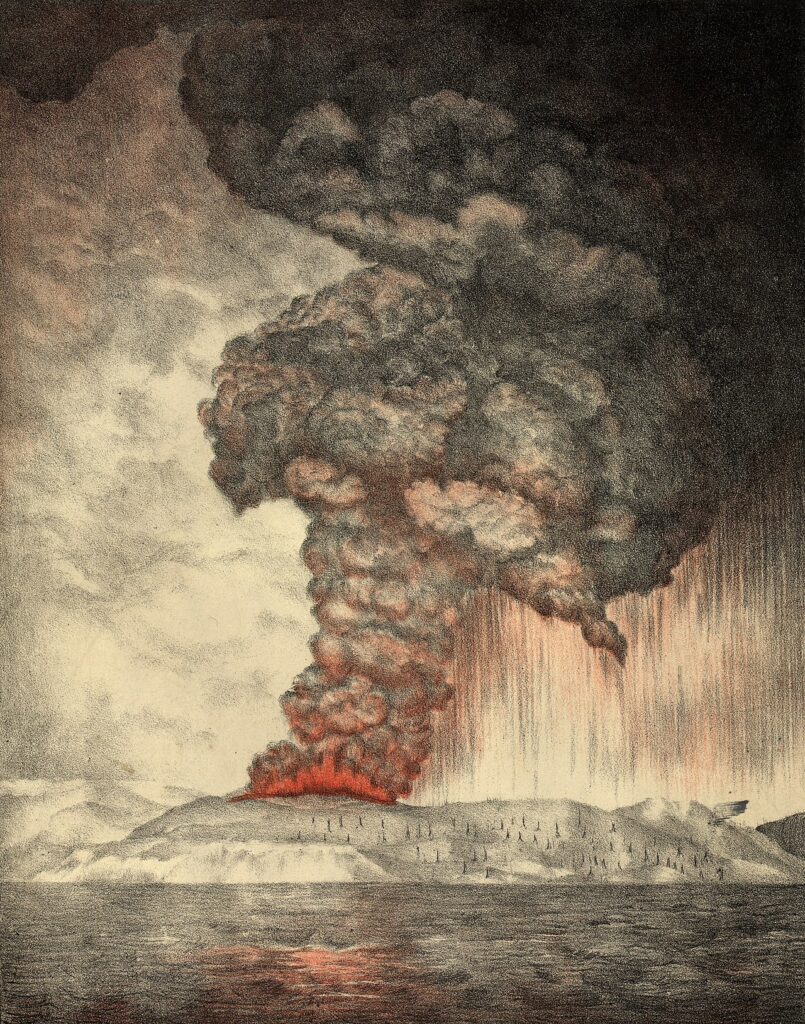A tsunami is one of the greatest and most potent natural disasters known to man. While several things can cause a tsunami, the result is always, quite literally, a tidal wave of disaster.
Tsunamis have been around since the beginning of time, but the first recorded occurrence was in 2000 BC off the coast of Syria. Since then, tsunamis have been documented worldwide but occur most frequently along the shores of the Pacific Ocean, the Mediterranean Sea, and the Eastern Pacific Ocean.
What Exactly is a Tsunami?
A tsunami is a truly frightening force of nature. Essentially, it’s a giant wave or series of waves that come from the ocean or the sea. In most cases, tsunamis result from massive underwater turbulence caused by an earthquake or a volcano.
Tsunamis are so destructive because of how big and fast they’re moving. A single tsunami wave can be over 1,000 feet tall, 12 miles wide, and move at speeds of up to 500 mph as it reaches land.
Because of the sheer size and speed of these waves, they can cause extensive damage along the coast and flooding up to a mile inland. However, it all depends on the wave’s size and speed, as most tsunamis don’t grow taller than 30 or 40 feet.
10 of the Largest and Most Destructive Tsunamis in History
Without further ado, let’s dive into the largest and most destructive tsunamis of all time.
Sumatra, Indonesia – 2004
No matter who you ask, the 2004 earthquake and tsunami in Sumatra, Indonesia, is often considered the worst tsunami of all time.
The destruction began on December 26, just one day after Christmas, when a 9.1 magnitude earthquake occurred off the coast of Sumatra in the Pacific Ocean.
The resulting tsunami from this earthquake created waves more than 160 feet tall that swept over 3 miles inland.
Although the Sumatra tsunami wasn’t the largest tsunami wave ever, it was by far the most destructive. It claimed the lives of an estimated 230,000 people, injured 225,000 more, and caused more than $10 billion in damage.
North Pacific Coast, Japan – 2011
The Great Sendai Earthquake and Tsunami, as the disaster has come to be known, takes the number two spot on our list for several reasons:
- It’s the most recent major tsunami to occur.
- It was the costliest and one of the most destructive tsunamis ever and had a sizeable death toll.
- It could have resulted in the worst nuclear disaster since Chornobyl.
The Great Sendai Earthquake and ensuing tsunami occurred off the coast of Japan’s main island, Honshu, on March 11, 2011.

The tsunami was set off by a 9.0 magnitude underwater earthquake that resulted in waves more than 130 feet tall traveling at a speed of 500 mph. The result was the destruction of entire towns and cities.
This tsunami claimed the lives of an estimated 18,000 people, left half a million homeless, and caused more than $235 billion of damage.
In addition, its proximity to several nuclear power plants along the Japanese coast nearly resulted in a catastrophic nuclear event.
Lituya Bay, Alaska – 1958
In terms of sheer size, the Lituya Bay tsunami is by far the largest megatsunami ever recorded in history. Yet, despite this, there’s also a good chance you’ve never heard of this disaster.
That’s because it happened in 1958 along the mostly uninhabited coastline of southeastern Alaska in a small fjord known as Lituya Bay.
The tsunami was generated by a powerful 7.8 magnitude earthquake that resulted in more than 90 million tons of rock and debris getting dumped into Lituya bay.
This created the largest tsunami wave in history, measuring 1,720 feet tall. However, because the tsunami only killed five people and caused minor damage, it didn’t gain much notoriety.

Lisbon, Portugal – 1755
The tremendous Portuguese tsunami of 1755 happened on All Saints Day and was the most destructive tsunami in recorded history up to that point
The tsunami was created by a series of 8.0+ magnitude earthquakes
These earthquakes resulted in not one but three separate tsunami waves that hit various port cities in Portugal, but none were as destructive as the one that hit Lisbon.
The wave that hit Lisbon was around 100 feet tall and one of the widest in recorded history, as it affected cities hundreds of miles along the coast. In Lisbon alone, however, the death toll was 60,000, and the destruction was unimaginable.
Krakatau, Indonesia – 1883
While the 2004 tsunami in Indonesia was the most destructive of all time, it wasn’t the first major tsunami to hit the country.
Instead, that honor goes to the Krakatau tsunami of 1883. However, unlike the other tsunamis on this list, the Krakatau tsunami happened due to a volcanic eruption.
Regardless of the cause, this tsunami was highly destructive as it claimed an estimated 40,000 lives and injured 30,000 more. It also measured more than 120 feet tall and is considered the most violent volcanic tsunami in history.

Enshunada Sea, Japan – 1498
The Enshunada Sea tsunami of 1498 is the oldest recorded tsunami on our list. It happened on the morning of September 20 and affected the coastal cities of Kii, Sagami, Izu, Surugu, and Mikawa.
Although the exact magnitude of the earthquake that caused the tsunami isn’t fully known, most experts place it at 8.3.
We also don’t know how tall or wide the resulting tsunami wave was. What we do know, however, is that it killed more than 30,000 people and left thousands more injured and homeless.
Nankaido, Japan – 1707
Keeping to the trend of destructive Japanese tsunamis, let’s look at number seven on our list, the Nankaido tsunami of 1707. Unfortunately, while we know more about this tsunami than the one in 1498, the facts are somewhat messy and skewed.
We know that the tsunami wave was nearly 100 feet tall and happened as a result of an 8.4 magnitude earthquake.
We also know that more than 30,000 people died, a similar number of buildings were destroyed, and dozens of ensuing waves washed inland for miles.
Southern Chile, South America 1960
Our next tsunami takes us to South America off the coast of Chile. In 1960, the largest earthquake ever recorded, a 9.5 magnitude earth-shaker, happened in southern Chile and was strong enough to have a global impact.
While the quake did plenty of damage, it also created a tsunami wave measuring up to 80 feet tall in some areas. This wave killed roughly 140 people and left more than 2 million Chileans homeless.
Messina, Italy – 1908
The earthquake and tsunami in Messina, Italy, of 1908 weren’t necessarily the biggest to ever occur, but it was one of the worst double disasters in modern history.
It all started when a 7.5 magnitude earthquake occurred in the Straight of Messina, resulting in tsunami waves up to 40 feet tall.
Because the earthquake and tsunami happened in the wee hours of the morning, most people were still in bed and completely unprepared.
As a result, more than 80,000 people perished in the double disaster, and hundreds of thousands were forced to relocate. The earthquake and tsunami nearly destroyed more than a dozen cities in the area, including Messina and Reggio de Calabria.
Mount St. Helens, Washington – 1980
The final entry on our list hits closer to home than any other tsunami in recorded history.
The volcanic eruption of Mount St. Helens in Washington was one of the most shocking and frightening natural disasters to hit the United States in the last 50 years. It also led to one of the most unique and largest tsunamis ever recorded.
When Mount St. Helens erupted on May 18, 1980, a large chunk of the volcano broke off into nearby Spirit Lake. This resulted in a tsunami wave exceeding 800 feet tall that hammered into the side of Mount Margaret. Although no one was killed in the tsunami, it is one of the tallest tsunamis in history.
Sources
Japan earthquake and tsunami of 2011 – Aftermath of the disaster | Britannica
Lisbon earthquake of 1755 | Portugal | Britannica
10 Most Catastrophic Tsunamis in Modern History – The Borgen Project
Messina earthquake and tsunami of 1908 | Italy | Britannica
The 10 most destructive tsunamis in history (australiangeographic.com.au)
10 Biggest Tsunamis In History (dreamcivil.com)


The most interesting thing about the Nankaido tsunami is that it went the other direction as well. Stories of it are still told by native tribes in western Canada.